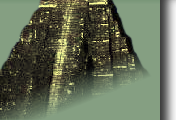January 3rd
Tikal
Copān
is the Mayan city best known for its delicate artwork, Chichčn Itza is famed for
its scale and duration of use (well past the 900 “collapse”), but Tikal is
simply the center. Huge, grand,
imposing, sprawling – all superlatives apply. The ruling dynasty was sufficiently rich to endow royal
burials with intricate jade masks and jewelry, pounds of the precious stone
entombed with the king. A map
shows all the currently known ruins, outlining a city plan including high-rent
suburbs, semi-rural sprawl, highways, and an official center. The city eventually was rich enough to
support a middle class of sorts, as some of the more central residential
districts show. A day is barely
sufficient to see the highlights, but we valiantly try. (Heat and mosquitos add an authenticity
to temple climbing.)
The
main temple plaza is laid out with astrological precision, as is common for
cities of this star-gazing civilization.
Climbing the tallest temples provides a glimpse of the wonders of the
past, as one mentally clears away the trees and covers the stones in plaster
and bright paints shining in the sun.
Unlike some archeological sites, these even provide wooden staircases to
make this gorgeous site available to those not entirely nimble. The coatimundis, however, need no help
to reach the top.
A bit removed from the town center is a neighborhood of those not quite royal, a scribe’s community complete with school. The relief images in these houses portray the lives and lineages of the scribes, offering a glimpse outside the realm of Gods and kings. (Not that far outside, as the scribes are clearly closely related to the kings.) Looking at the low structures, one cannot refrain from speculating on the nature of the many rounded low hills of the Peten. Many contain nothing more than limestone, but…




